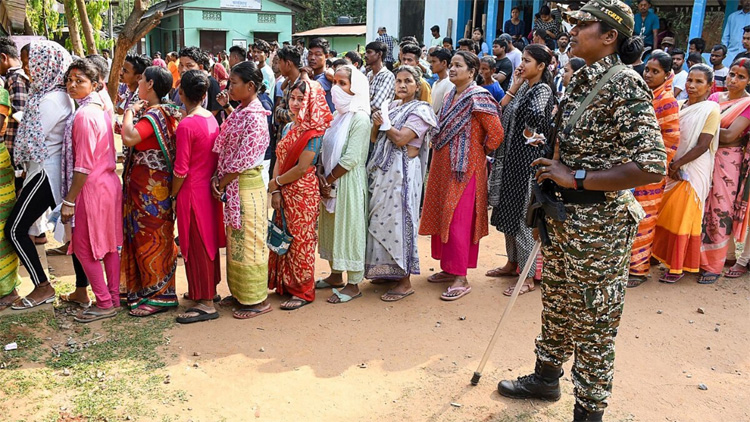Lok Sabha elections Phase 2: Tripura records highest voter turnout, UP lowest
In the second phase of the Lok Sabha elections that covered 88 seats across 12 states and a union territory, a voter turnout of 63.50 per cent was reported. The Election Commission (EC) stated that polling was mostly peaceful.
The tentative voter turnout figure at 8 pm was 63.50 per cent, which is expected to increase as reports from all polling stations are received. Additionally, voters arriving at polling stations until the end of polling hours were allowed to cast their votes.
In some villages in Uttar Pradesh’s Mathura, Rajasthan’s Banswara and Maharashtra’s Parbhani, voters initially boycotted the polls but were later convinced by authorities to participate.
Polling for the second phase began at 7 am and concluded at 6 pm, with several states experiencing intense heat conditions. The first phase of polling took place on April 19 in 102 seats across 21 states and Union territories.
Voting took place across all 20 constituencies in Kerala, 14 out of the 28 seats in Karnataka, 13 seats in Rajasthan, 8 seats each in Maharashtra and Uttar Pradesh, 6 seats in Madhya Pradesh, 5 seats each in Assam and Bihar, 3 seats each in Chhattisgarh and West Bengal, and 1 seat each in Manipur, Tripura, and Jammu and Kashmir.
Here are the key takeaways:
The voter turnout, at the conclusion of polling on Friday, stood at approximately 63 per cent, a decrease from the 65 per cent recorded in the first phase last week and the 68 per cent reported during the second phase in 2019.
According to Election Commission data, Tripura recorded the highest voting percentage at 79.46 per cent, followed by Manipur at 77.32 per cent. Uttar Pradesh recorded a turnout of 54.85 per cent, and Bihar recorded 55.08 per cent. The polling in the Tripura East (ST) constituency concluded peacefully with two polling stations reporting voter turnouts of over 100 per cent. This was attributed to the use of Election Duty Certificates (EDC), according to a statement by the Chief Election Officer of Tripura on Friday.
In Manipur, which has seen a heightened presence of security personnel during polling, the voter turnout was notably high at 77.32 per cent.
Uttar Pradesh’s voter turnout was 7 per cent less than the 62 per cent voting witnessed for the same seats in 2019.
In Kerala, the voter turnout stood at 70.21 per cent. The voter turnout in Congress leader Rahul Gandhi’s Wayanad Lok Sabha constituency in Kerala was recorded at 72.70 per cent.
In Madhya Pradesh, the voter turnout was recorded at 57.88 per cent.
About 71.11 per cent of the 77,26,668 voters cast their votes in the five parliamentary constituencies of Assam during this phase.
The voter turnout was 57.83 per cent in eight constituencies in Maharashtra, while in Rajasthan, it reached 64.07 per cent.
Bihar saw a turnout of 55.08 per cent and Jammu and Kashmir reported 71.91 per cent. West Bengal recorded a 71.84 per cent voter turnout. The Election Commission received nearly 300 complaints in West Bengal, primarily concerning EVM malfunctioning.
Official figures indicate that UP’s Gautam Buddh Nagar constituency witnessed a voter turnout of 53.30 per cent. Comparatively, data from the Election Commission reveals that the turnout was 60.47 per cent in the 2019 Lok Sabha elections, 60.38 per cent in 2014, and 48 per cent in 2009. Almost half of Bengaluru voters abstained from voting in this phase. The voter participation in three urban constituencies within the city — Bangalore Central, Bangalore North, and Bangalore South — was notably lower. The approximate turnout in these constituencies was 52.81 per cent for Bangalore Central, 54.42 per cent for Bangalore North, and 53.15 per cent for Bangalore South.

